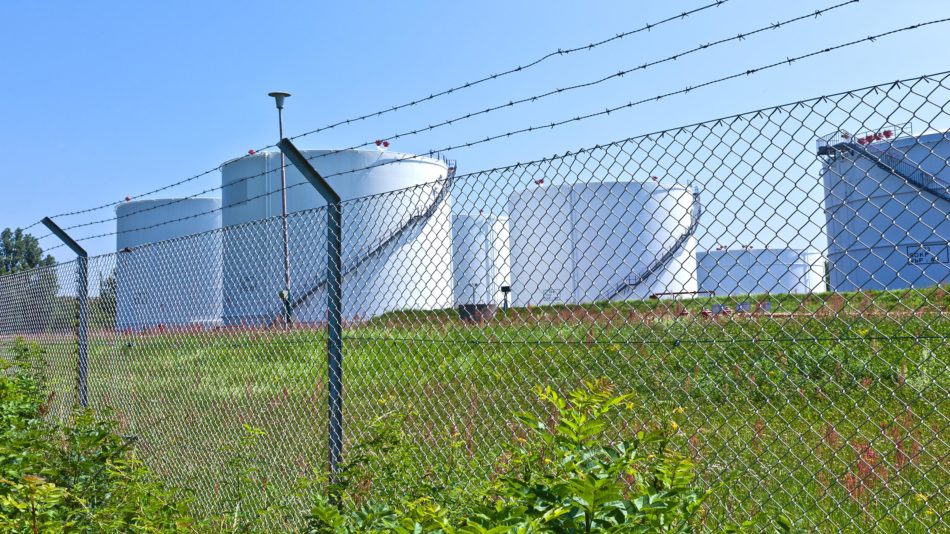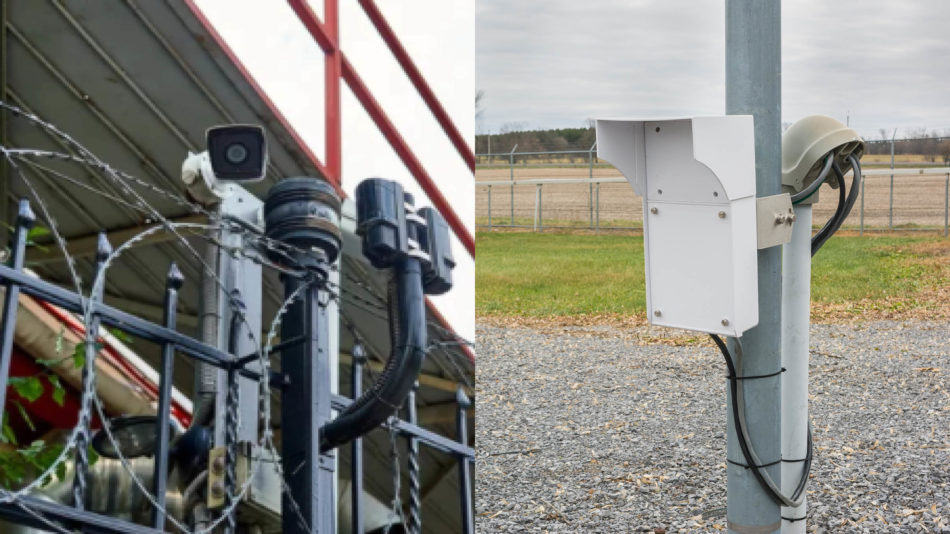Intrusion Deterrence and Detection for Tank Storage Facilities

The physical security of storage facilities for oil, natural gas, and refined products is critical for public safety. A deliberate attack on a facility could result in injury or loss of human life, harm to the environment, and severely impact supply chains of energy and other critical products. Even less serious incidents, such as vandalism, theft or simple trespassing can result in substantial damages to high-value assets, potential liability and interruption of operations.
Storage facilities and refineries can cover large areas, while the constant flow of workers and materials create significant security challenges. Traditionally, security at these sites consists of fences, surveillance cameras, access control, and on-site personnel. These measures provide a solid foundation, but security gaps exist – a fence by itself only keeps out opportunistic intruders, cameras record incidents but don’t stop them, and security personnel need to be deployed strategically at larger facilities.
Physical security technology can augment the effectiveness of both physical infrastructure and security personnel. When designed and deployed correctly, it is a cost-effective element of a facility’s risk-management program.
Security Starts at the Perimeter
Perimeter intrusion detection systems form the first line of defense, detecting intruders before they get inside. While there are many types of sensor technologies that protect perimeters, some are more suitable for storage facilities than others. When looking at different systems, consider these factors:
- Coverage – Does the system protect the entire perimeter (e.g. no blind spots)?
- Probability of Detection – Does the system quickly and accurately detect attempts to breach the perimeter each and every time?
- Nuisance Alarm Rate – Does the system only generate alarms for real or simulated intrusion attempts? If the system generates alarms during normal conditions or high winds, security may start to suffer because of complacency when responding to alarms.
- Ease of Installation and Configuration – How easy is the system to install and configure? Can the system be configured remotely from an equipment room, so maintenance staff can avoid travelling out to the perimeter whenever an adjustment is required?
- Integration with Security and Video Management Systems (SMS/VMS) – Can the information generated by the system be presented in a way that improves situational awareness? For example:
- Can the SMS/VMS display the precise location of intrusions attempts on a map?
- Can the alarms be integrated with the VMS for automated camera control?
- Is there full logging of activity so that incident reports can be generated?
Increased Security, Increased Public Safety
Senstar has a full range of perimeter intrusion detection products to help keep tank storage facilities safe. Perimeter intrusion detection technology, including fence-mounted sensors, intelligent lighting and integrated video analytics, can help meet the goal of reliably detecting attempts to bypass perimeter fencing and gates. The key concerns when evaluating these systems for use at tank storage facilities is to ensure they reliably detect intrusion attempts while avoiding false alarms, avoiding blind spots and other security gaps, are cost-effective for sites with large perimeters, and can be properly integrated to enhance overall security response capabilities. Implementation of the appropriate physical technology along with security practices can help mitigate risks to environmental and public safety.
Learn more about our physical security solutions for the oil and gas industry.


